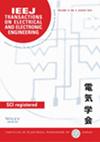求助PDF
{"title":"Research on a Novel Online Obstacle Avoidance Algorithm in an Asymmetric Teleoperation","authors":"Hua Chen, Baoyu Shi","doi":"10.1002/tee.24259","DOIUrl":null,"url":null,"abstract":"<p>Teleoperation robots are being used more and more widely. The safety issues of robots during operation are increasingly attracting people's attention; In actual dangerous environments, during the operation of the teleoperation control system, the real-time presence of obstacles com-presses the robot's safe workspace, leading to the failure of planned paths. This study is mainly about a robot online obstacle avoidance algorithm based on offline trajectory, aiming at the problems that ensure that the slave–robot is not affected during operation. Besides, this algorithm achieves the goal of avoiding obstacles by selecting obstacle avoidance parameters and allowing the robot to switch between primary and secondary movements in real-time. Two robot motion scenarios were selected in the article. One is obstacle avoidance with a single arm of slave–robot and the other is coordinated obstacle avoidance with a dual-arm robot for simulation experiments. The simulation experiment results showed that the algorithm proposed in this article is suitable for the designed asymmetric teleoperation system, the slave–robot can actively avoid obstacles under the control of the main robot. The algorithm perfectly satisfied the industry standards, and meet the design requirements of the teleoperation control system. © 2025 Institute of Electrical Engineers of Japan and Wiley Periodicals LLC.</p>","PeriodicalId":13435,"journal":{"name":"IEEJ Transactions on Electrical and Electronic Engineering","volume":"20 4","pages":"656-664"},"PeriodicalIF":1.0000,"publicationDate":"2025-01-23","publicationTypes":"Journal Article","fieldsOfStudy":null,"isOpenAccess":false,"openAccessPdf":"","citationCount":"0","resultStr":null,"platform":"Semanticscholar","paperid":null,"PeriodicalName":"IEEJ Transactions on Electrical and Electronic Engineering","FirstCategoryId":"5","ListUrlMain":"https://onlinelibrary.wiley.com/doi/10.1002/tee.24259","RegionNum":4,"RegionCategory":"工程技术","ArticlePicture":[],"TitleCN":null,"AbstractTextCN":null,"PMCID":null,"EPubDate":"","PubModel":"","JCR":"Q4","JCRName":"ENGINEERING, ELECTRICAL & ELECTRONIC","Score":null,"Total":0}
引用次数: 0
引用
批量引用
Abstract
Teleoperation robots are being used more and more widely. The safety issues of robots during operation are increasingly attracting people's attention; In actual dangerous environments, during the operation of the teleoperation control system, the real-time presence of obstacles com-presses the robot's safe workspace, leading to the failure of planned paths. This study is mainly about a robot online obstacle avoidance algorithm based on offline trajectory, aiming at the problems that ensure that the slave–robot is not affected during operation. Besides, this algorithm achieves the goal of avoiding obstacles by selecting obstacle avoidance parameters and allowing the robot to switch between primary and secondary movements in real-time. Two robot motion scenarios were selected in the article. One is obstacle avoidance with a single arm of slave–robot and the other is coordinated obstacle avoidance with a dual-arm robot for simulation experiments. The simulation experiment results showed that the algorithm proposed in this article is suitable for the designed asymmetric teleoperation system, the slave–robot can actively avoid obstacles under the control of the main robot. The algorithm perfectly satisfied the industry standards, and meet the design requirements of the teleoperation control system. © 2025 Institute of Electrical Engineers of Japan and Wiley Periodicals LLC.
一种新的非对称遥操作在线避障算法研究
遥控机器人的应用越来越广泛。机器人在操作过程中的安全问题越来越引起人们的关注;在实际危险环境中,遥操作控制系统在运行过程中,障碍物的实时存在压缩了机器人的安全工作空间,导致规划路径失效。本文主要研究基于离线轨迹的机器人在线避障算法,以保证从机器人在运行过程中不受影响。此外,该算法通过选择避障参数,并允许机器人在主要运动和次要运动之间实时切换,从而达到避障的目的。本文选取了两种机器人运动场景。一种是从机器人单臂避障,另一种是双臂机器人协调避障仿真实验。仿真实验结果表明,本文提出的算法适用于所设计的非对称遥操作系统,在主机器人的控制下,从机器人能够主动避障。该算法完全满足行业标准,满足遥操作控制系统的设计要求。©2025日本电气工程师协会和Wiley期刊有限责任公司。
本文章由计算机程序翻译,如有差异,请以英文原文为准。

 求助内容:
求助内容: 应助结果提醒方式:
应助结果提醒方式:


